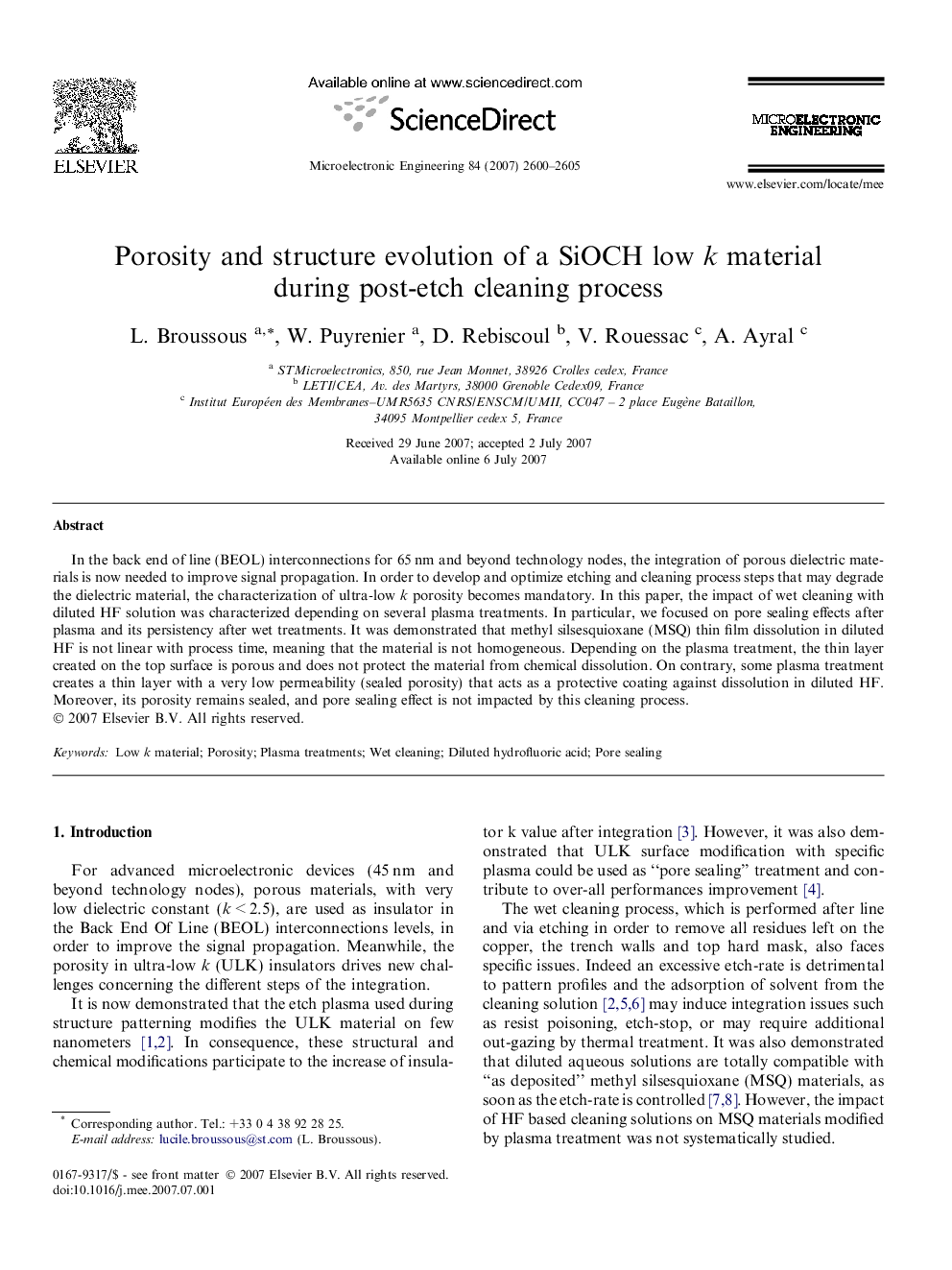| Article ID | Journal | Published Year | Pages | File Type |
|---|---|---|---|---|
| 540791 | Microelectronic Engineering | 2007 | 6 Pages |
In the back end of line (BEOL) interconnections for 65 nm and beyond technology nodes, the integration of porous dielectric materials is now needed to improve signal propagation. In order to develop and optimize etching and cleaning process steps that may degrade the dielectric material, the characterization of ultra-low k porosity becomes mandatory. In this paper, the impact of wet cleaning with diluted HF solution was characterized depending on several plasma treatments. In particular, we focused on pore sealing effects after plasma and its persistency after wet treatments. It was demonstrated that methyl silsesquioxane (MSQ) thin film dissolution in diluted HF is not linear with process time, meaning that the material is not homogeneous. Depending on the plasma treatment, the thin layer created on the top surface is porous and does not protect the material from chemical dissolution. On contrary, some plasma treatment creates a thin layer with a very low permeability (sealed porosity) that acts as a protective coating against dissolution in diluted HF. Moreover, its porosity remains sealed, and pore sealing effect is not impacted by this cleaning process.
